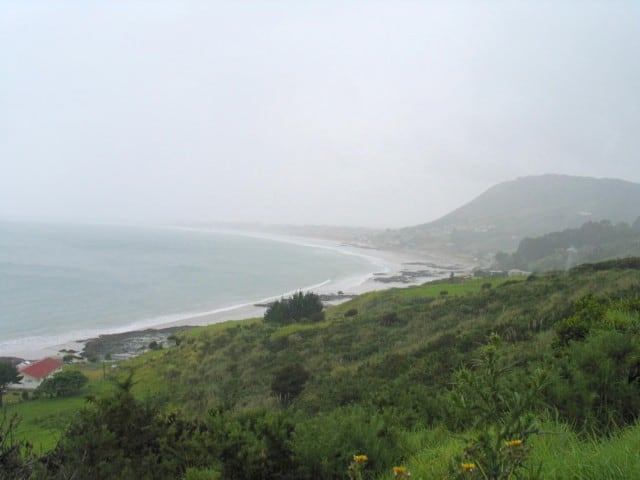
Ahipara.
Ahipara, 90 Mile Beach. A wet misty day creates a mystical feeling over Ahipara, the southern starting point of the world famous 90 Mile Beach.Ahipara has a proud history of Māori settlement and is the tribal area of the
Te Rarawa people and descendents of the waka Tinana which carried the first people here from the Pacific. Te Rarawa emphasise descent from the Tinana canoe, captained by Tūmoana.
The waka (canoe) Tinana landed at 3Tauroa near Ahipara. The chief, Tūmoana, laid claim to the land between 4Hokianga and Ahipara, as far inland as the mountains 5Mangamuka and 6Maungataniwha. Later Tūmoana returned to Hawaiki, but his daughter Kahutianui and son Tamahotu remained at Tauroa. The canoe eventually returned, adzed a second time and renamed as 7Te Māmaru, with Tūmoana’s nephew Parata on board. Directly descending from Tūmoana was Haupare (his great grandson) who married Paengatai; from them came Taranga. Their descendants were known as Ngati Haupare, who later became the Iwi Te Rarawa. By following this link you might be interested in reading about the top places to go in New Zealand.
The name Te Rarawa comes from an incident on the shores of the Kaipara Harbour. Te Ripo, a high-born woman, was killed by a war party from the Kaipara. An avenging party led by Ngāmotu pursued the warriors south to Kaipara Harbour. However, the fleeing party crossed the harbour to their pa at Okika. They performed incantations, making the waters of the harbour too rough to cross. Frustrated, Ngāmotus people raided a cemetery on the shores of the harbour, removing the remains of a deceased priest. They burnt the remains and threw the ashes into the harbour to calm the waters. They also ate part of the body.
Toko, an old woman who witnessed these events, exclaimed, ‘Kātahi anō te iwi kai rarawa!’ (Who would have heard of such cannibalism?), and ‘Te rarawakaiwhare!’ (The people consume all!). Te Rarawa then became the tribal name.
